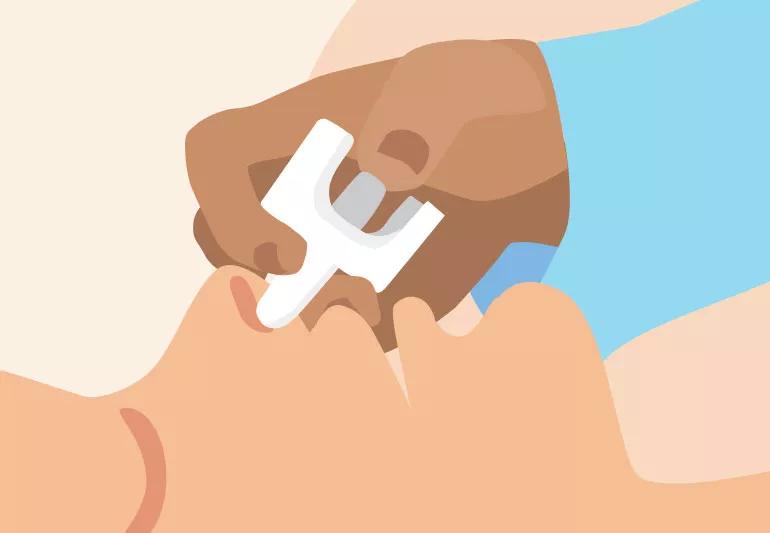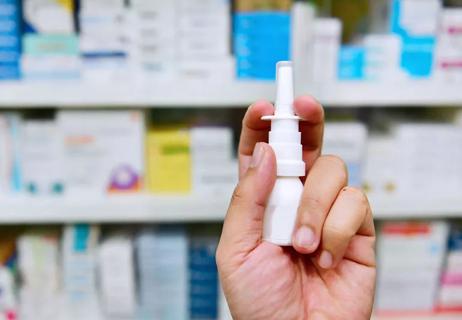The nasal spray has the power to reverse the effect of opioids

Anyone can experience an opioid overdose, even if they’re using an opioid for the first time. That’s because opioids have the power to interrupt your ability to breathe, especially when they’re used in high amounts or in combination with other substances. Opioid overdoses can cause respiratory failure. Without oxygen, your brain and other organs can only survive for a few minutes.
Advertisement
Cleveland Clinic is a non-profit academic medical center. Advertising on our site helps support our mission. We do not endorse non-Cleveland Clinic products or services. Policy
Fortunately, naloxone is a medication that reverses the effects of opioids and can return normal breathing to a person who’s having difficulty breathing or has stopped breathing altogether from an opioid overdose. It’s a lifesaving medication designed to stop fatal opioid overdoses from happening.
There are various brand names and forms of naloxone, but the U.S. Food and Drug Administration (FDA) has approved the use of Narcan® as an over-the-counter naloxone nasal spray. While it’s hard to say just how many lives it’s saved so far, studies have shown that Narcan is effective when it’s administered quickly and properly.
Ambulatory care pharmacist Ashley Jones, PharmD, BCACP, explains how to use Narcan and when you should give it to someone in need.
Narcan is a nasal spray that usually comes in a package with two doses. If the first dose is ineffective, you can give a second dose without worrying about any additional side effects or consequences.
It’s important to note that Narcan is only effective against opioids, and its effects last as long as 30 to 90 minutes. This is important to remember for two reasons:
Advertisement
“After you call emergency services, it’s best to give someone Narcan as fast as possible,” states Dr. Jones. “The longer you wait to give them Narcan, the more likely it’s going to be ineffective.”
Here’s how to administer Narcan:
If you suspect someone is experiencing any type of an overdose, you don’t have to wait for them to be unresponsive before giving them Narcan.
“If someone shows signs of an overdose — slow or shallow breaths; slow pulse (heartbeat); extremely pale, cold or clammy skin; blue lips or fingernails; or vomiting — giving them Narcan can help,” Dr. Jones states. “And if they are unresponsive or unconscious, and there are signs of an overdose, they need Narcan immediately.”
You should be able to find Narcan at your local pharmacy, from healthcare providers or at local retailers once the FDA has rolled out over-the-counter Narcan. But for people who are unable to purchase Narcan from their local retailer or pharmacy and for people who are worried about the social stigmas associated with opioid use, there are discrete harm reduction programs across the country, like NEXT Distro, which can provide Narcan for free.
Advertisement
Learn more about our editorial process.
Advertisement

‘Opioids’ is a catchall term for opiates and other drugs that cause similar opioid-like effects

The herbal supplement continues to be sold amidst warnings about health risks

The result is a huge win for anyone at risk of an opioid overdose

An innovative treatment option may be possible

The Yuzpe regimen is less effective than other forms of emergency contraceptives, and it’s associated with more side effects

The best available evidence indicates that, used correctly, acetaminophen is safe to take throughout a pregnancy

This phenomenon is when your high expectations can influence how well a medication or procedure works

Your body’s response to rapid weight loss from the medication may cause shedding

Babies can get congested easily, but you can calm their cough by keeping them hydrated, using nasal drops and running a humidifier

Weight loss may cause loose, sagging skin and muscle loss to your rear

Several conditions, like vitiligo and fungal infection, can cause a loss of pigmentation, leading to white spots or patches on your skin